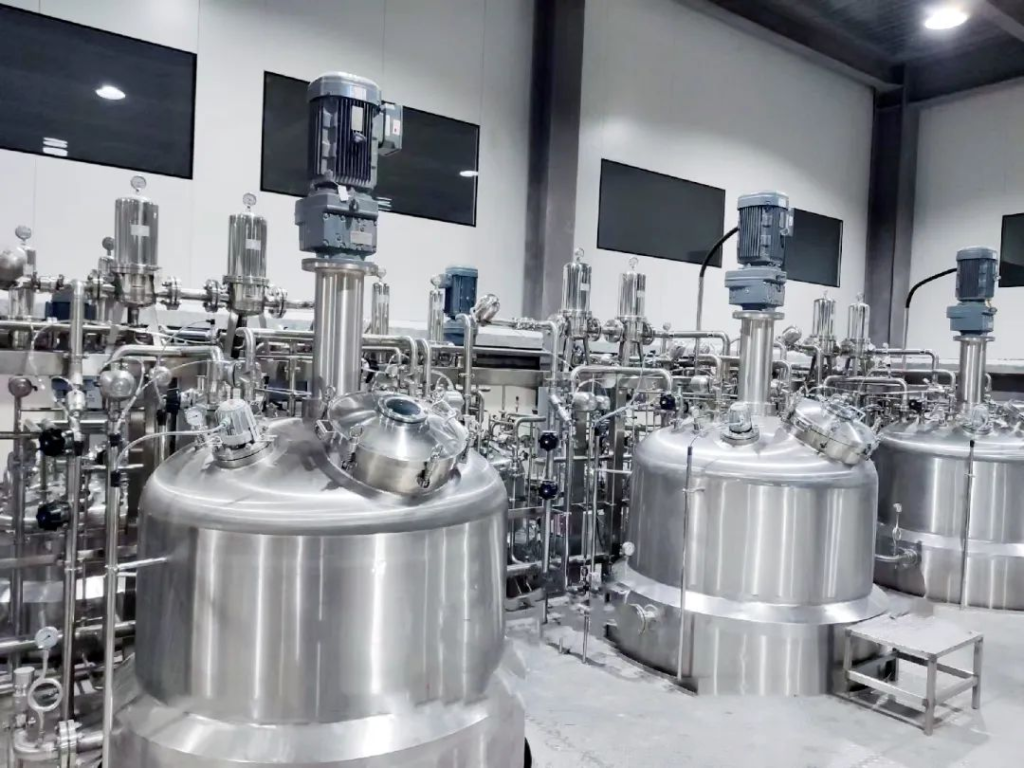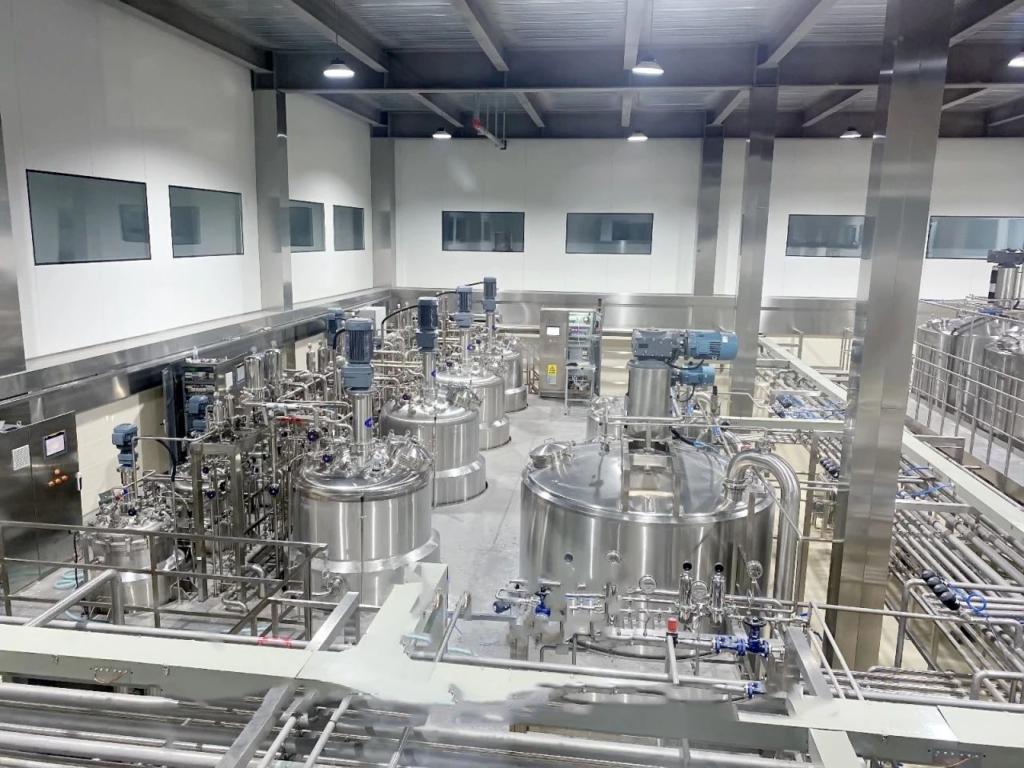Fermentation generally refers to the process of using microorganisms to manufacture industrial raw materials or products. It is carried out by microorganisms (bacteria, yeast, etc.), organic matter (mainly carbohydrates), culture medium, etc. under certain conditions such as temperature and pH.
01 Bio-fermentation technology

BAILUN industrial stainless steel fermenter
Fermentation is the earliest biochemical reaction that humans came into contact with. Winemaking, sauce making, vinegar making, etc. are all the earliest fermentation processes. Modern fermentation technology is based on the intersection of multiple disciplines and uses industrial fermentation for large-scale material processing and production. The application areas of technology are no longer limited to food and beverages, but extend to medicine, cosmetics and other fields.
Principles of fermentation technology
The principle of biological fermentation mainly involves the metabolic process of microorganisms. Under suitable environmental conditions, microorganisms convert substrates into target products through enzyme-catalyzed reactions on substrates. The metabolic process of microorganisms includes two modes: aerobic respiration and anaerobic fermentation. Aerobic respiration refers to the complete oxidation of substrates by microorganisms in the presence of oxygen to produce energy and carbon dioxide. Anaerobic fermentation refers to the partial oxidation of substrates by microorganisms in the absence of oxygen or insufficient oxygen to produce products such as lactic acid, alcohol, acid, and gas.
Classification of biological fermentation technology
There are generally two types of fermentation: liquid fermentation and solid fermentation.
Advantages of biological fermentation technology
Compared with chemical methods,biological fermentation technology has the advantages of better controllability, higher safety, energy saving, less by-products and less environmental pollution. In addition, the decomposability of microorganisms can keep the biosynthesis of special structures highly uniform, ensuring the safety and efficacy of the product.
Current R&D Hotspots
Today, fermentation technology has become an application direction and R&D hotspot in the cosmetics field. For example, SK-II Magic Water adds galactosyl fermentation product filtrate, Lancome Little Black Bottle and Estee Lauder Little Brown Bottle add bifid yeast fermentation product lysate. More and more brands and companies are beginning to apply biological fermentation technology to product terminals, continuously improving the safety and efficacy of cosmetics.
02 Application of bio-fermentation technology in cosmetics
At present, the application of bio-fermentation technology in cosmetics is mainly divided into: fungal fermentation, bacterial fermentation and protist fermentation. Among them, fungal fermentation includes: yeast fermentation, medicinal fungal fermentation and marine fungal fermentation.

(1)Fungal fermentation
Yeast fermentation
Yeast fermentation is widely used in the field of cosmetic research and development. It contains rich active ingredients such as free amino acids, small molecule peptides, vitamins, etc., and has the effects of whitening, moisturizing, delaying skin aging, regulating skin pH and repairing damaged skin.
Medicinal fungal fermentation
Medicinal fungal fermentation products are mainly taken from “medicinal and edible” fungal raw materials such as Ganoderma lucidum, Matsutake, Tremella fuciformis, etc. For example, the liquid fermentation product of Matsutake has the effect of whitening, and the fermentation product of Poria cocos is beneficial to skin care. At present, the fungal raw materials added to many cosmetics on the market are actually mainly its fermentation products.
Marine fungal fermentation
Marine microorganisms live in a special environment, and the bioactive molecules they produce usually have novel structures and diverse functions. Marine fungi are recognized as one of the most promising marine organisms and are an important biological source for current cosmetic research and development.
(2)Bacterial fermentation
Bacterial fermentation products are often used as natural preservatives in cosmetics and can also produce new functional substances. Studies have shown that lactic acid bacteria fermentation can develop milky masks to achieve whitening, moisturizing, skin repair, and soothing effects. Marine bacteria can produce active substances such as amino acids, antibiotics, and vitamins.
(3)Protist fermentation
Protists refer to single-celled eukaryotic organisms. Microalgae, as a type of protist, is an important biological source for current cosmetic research and development. For example, Spirulina in microalgae not only has good antioxidant properties, but also can inhibit the synthesis of melanin through a dual mechanism.

Factors affecting the scale-up of bio-fermentation processes
- Mass transfer and mixing
The mass transfer process is the process of material transfer. In the biological fermentation process, the mass transfer activity is carried out simultaneously with the biological reaction. The main mass transfer processes are divided into gas-liquid absorption and liquid mass transfer. Good mass transfer can ensure the necessary oxygen, nutrients and metabolites for the culture and development of microorganisms and cells. The volume dissolved oxygen coefficient is the most important factor affecting mass transfer, but due to the complex flow field in the biological fermentation tank and the many influencing factors, the volume dissolved oxygen coefficient analysis is more difficult.
Another key parameter that directly affects the process scale-up of the biological fermentation tank is the mixing process. Common biological fermentation reaction mixing includes liquid-liquid mixing, solid-liquid mixing, gas-liquid mixing and gas-liquid-solid three-phase mixing. Since the increase in the volume of the fermentation tank and the increase in fermentation products and raw materials directly lead to uneven mixing in the tank, scientifically increasing the mixing of various substances in the fermentation tank can improve the efficiency of biological fermentation.
- Shear
The traditional view is that increasing the stirring rate of the bio-fermentation tank can enhance the mass transfer and mixing of the fermentation process. However, with in-depth research, it is found that excessive shear force on the bio-fermentation target will damage microorganisms and cells. For example, in the microbial fermentation system, excessive shear force will damage the growth of bacteria; too low shear force is not conducive to bubble breakage and affects the efficiency of air transmission.
How to scientifically increase the mixing of various substances in the fermentation tank and control the shear stress within the acceptable range of microorganisms and cells is an important factor in the fermentation scale-up process.
- Heat transfer
Temperature is also an important factor in the bio-fermentation process. The temperature control of the bio-fermentation tank is mainly carried out through the jacket layer. However, as the volume of the large bio-fermentation tank increases, the surface area per unit heated becomes smaller. Therefore, the efficiency of heat transfer will directly affect the production efficiency of the bio-fermentation target.
- Other factors
There are other factors in the bio-fermentation tank scale-up process that will affect the fermentation process, such as the parameters of the bio-fermentation gas replenishment, feed replenishment speed and inlet setting, which will affect the fermentation process.
Contact Us:
Add:6848# Liuxiang Rd., Jiading, Shanghai, China
Contact Person: Maddie
Email:[email protected]
Phone:+86-134-7276-8163 (WhatsApp)
Website: https://fermentorchina.com/
